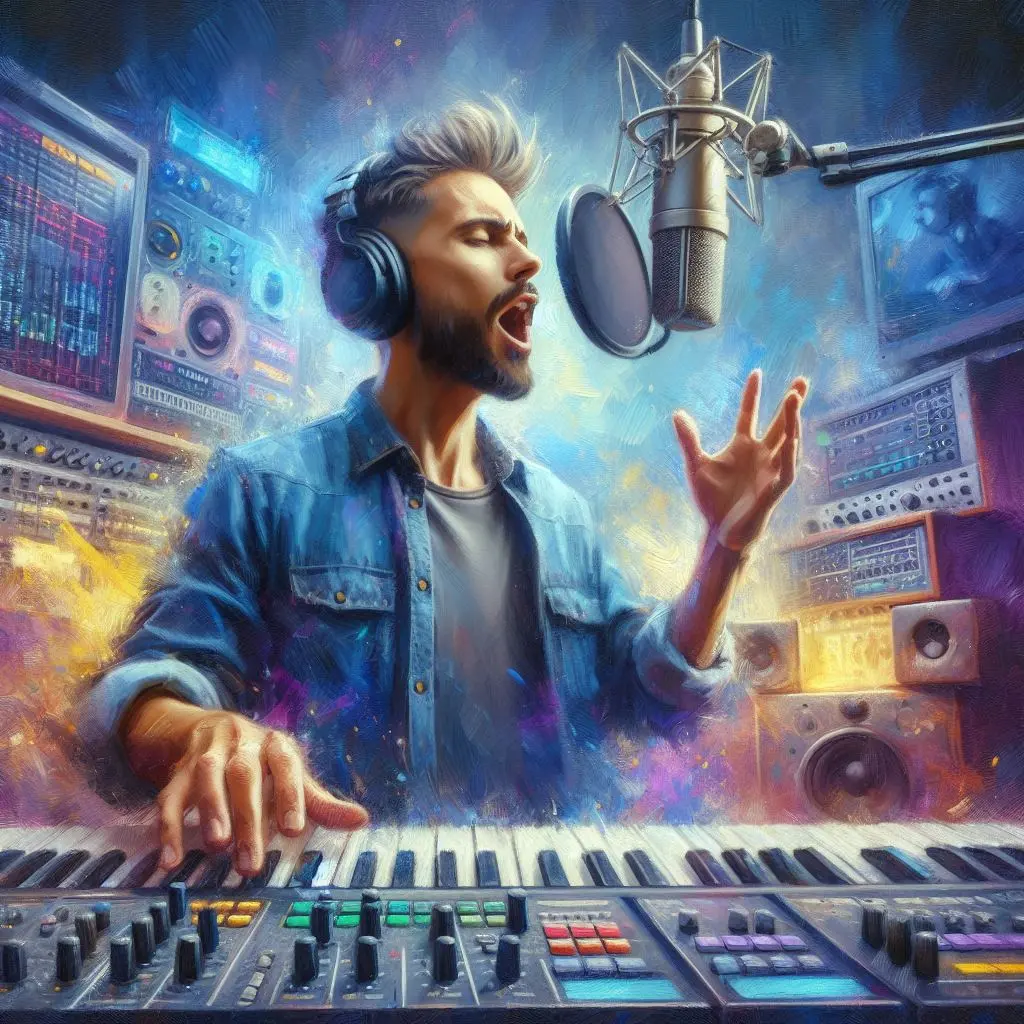The Evolution of MIDI: From Standardization to Innovation
Exploring MIDI’s evolution and impact on music creation, performance, and learning in the digital age.
One of my favorite Ed Sheeran tours happened in 2022. He performed his song, Shivers, in different cities but with a cool twist. He made the instrumental right there onstage from start to finish. Every city had a different version of the song. You can watch one of such performances here. Ed Sheeran played different parts of the song and looped them over each other until they came together for a wonderful final product. But how did he do it?
Ed Sheeran’s performance required him to connect his instruments to a machine that stored the sound in a loop and kept layering subsequent sounds. The technology that allowed all those different components to interact is called MIDI, or musical instrument digital interface.
In this article, I’ll explain what MIDI technology is and how it started. I’ll also talk about some applications of MIDI technology in today’s music world. Let’s do it…
What is MIDI Technology?
When you click on a button, the command is translated into computer language so that the computer can understand and execute it. MIDI technology is essentially a language that allows musical instruments and equipment to interact with each other. Sound engineers will have a more technical way of saying it, but MIDI technology allows you to send signals and commands from one instrument to another.
MIDI makes it possible to operate two different equipment as if they were one. When making an instrumental on your DAW, you can use different instruments to create sounds that the computer might not be giving you. They all operate as different components of a single machine to give you what you want. That’s MIDI.

History of MIDI
In the beginning…
Back in the 80s, musical equipment and synthesizers were in a Tower of Babel situation where different synthesizers and equipment were incompatible so there was no free flow of signals and other fancy engineering terms. This problem complicated life for musicians so much that the unthinkable happened. Rivals came together.
The two biggest musical equipment manufacturers of that time were Sequential Circuits (Sequential today) from the US and Roland Corp. from Japan. David Smith, the founder of Sequential, reached out to his Japanese counterpart to agree on making a universal standard so that all synthesizers could communicate with each other regardless of manufacturer. Imagine a mission so important rivals had to lay down their weapons and be friends. In 1983, their joint mission was crowned a success when Sequential’s Prophet 600 interacted with Roland’s Jupiter 6. History!
The music industry was never the same after that. MIDI became the universal standard by the 90s as work continued to enhance its features. Technology never sleeps, and by the early 2000s, MIDI became digital. The world went from MIDI cables to USB and finally abandoned cables in the 2010s with the arrival of Bluetooth and the web.
In 2020, a new version of MIDI, MIDI 2.0, was announced. We’ll talk about it later. First, let’s look at some applications of MIDI technology in the music industry.
Applications of MIDI
Music Production
The primary beneficiary of MIDI technology is music production. A connection that allows synthesizers and computers to communicate seamlessly is the dream for any producer. It allows producers to create and manipulate music to devastating effect. Synthesizers and computers are the main weapons of any producer and to have them in sync makes life much easier.
DAWs are one prime example of how MIDI technology has become critical to music production. The producer can create sounds, store them, then manipulate the different sounds and bring them together for a masterpiece. Without MIDI technology, production would be nowhere near what it is today.

Live Performances
As in the Ed Sheeran example, MIDI can be used live on stage as well. The way he deployed it was only one way to do it. DJs use MIDI controllers all the time in their performances. Live music is only one side of it. Stage effects can also be created using MIDI controllers. Different lights for different sounds, special lighting for beat drops, the list is endless.
MIDI controllers are truly powerful. They’re so important that no one ever considers life before them. How did they get anything done before MIDI?
Music Education
MIDI technology is such a huge part of the music industry because of how much easier life has become. The seamless connection between the different synthesizers and equipment gives any student of music a chance to learn so much more while doing so much less. One can learn to play the keyboard using their DAW, for example.
Technology makes being a musician easier, but it doesn’t stop there. It has made learning music much easier too.
MIDI 2.0
Technology never stops. In 2020, MIDI 2.0 was announced and a new age of MIDI technology was ushered in. The new version comes with several upgrades but here are some of my favorites:
- Messages no longer go in one direction. The synthesizers can now send and receive messages from each other. This means the artist or producer experience will be even more seamless.
- It supports higher-resolution messages than its predecessor ever could. This means the musical data is even more detailed than before.
- MIDI 2.0 devices don’t only communicate with each other, but can also communicate with their predecessors. So you don’t have to throw your equipment in the trash just yet.
Final Thoughts
Technology never stops, so I’m sure there’s much more in store. That said, MIDI is one old invention that has not lost its place in the industry. Upgrades abound, but the basic principle is huge. The equipment must communicate with each other.
MIDI technology is so common in the music industry that it’s easy to forget how important it is to us. We must always remember that there was a time when they didn’t have it. Remember that this project brought the two biggest rivals of the industry together for one common mission. If you still don’t know how to operate MIDI technology, it’s time to level up.
MIDI technology is here to stay, so you better get friendly.
Blog Article Tags
history synthesizers manufacturers standard universal digital USB componentsMore Articles
Where To Find Good Indie Music - If you're a long time fan or first time listener of Indie music, we'll show you the best methods for discovering the music you love.
The Key to Great Bands or Music Groups - Unlock the secrets to exceptional bands and music groups in this article.
What Is The Main Role of Sound Engineers? - I show the importance of sound engineers & those who made an impact over the years.
The Business Side of Music - How embracing the business side of music can lead to your success.
Ten Skills Every Indie Artist Needs - Here are 10 must learn indie artist skills to push your music career forward.


